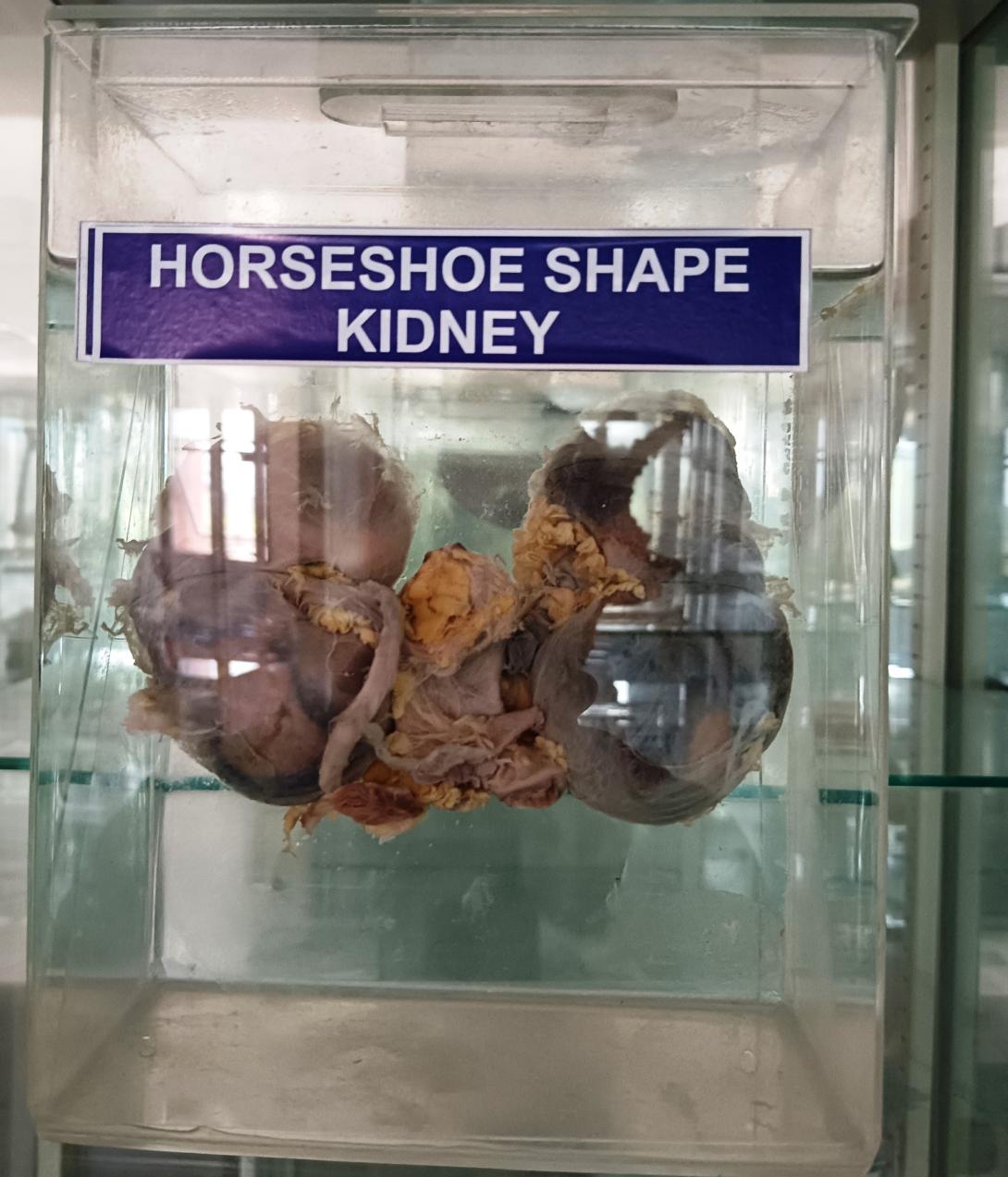The horseshoe-shaped kidney is a rare congenital anomaly that affects about 1 in 500 people. Here are some key points about the horseshoe-shaped kidney:
- Anatomy: In the horseshoe-shaped kidney, the lower parts of the two kidneys are fused together, creating a U-shaped structure. The upper parts of the kidneys are separate.
- Location: The horseshoe-shaped kidney is located in the abdomen, just below the diaphragm and on either side of the spine.
- Function: The horseshoe-shaped kidney functions like a normal kidney, filtering waste and excess fluid from the blood and producing urine.
- Symptoms: In most cases, the horseshoe-shaped kidney does not cause any symptoms and is discovered incidentally during imaging tests. However, in some cases, it can be associated with other congenital anomalies or may cause complications such as kidney stones, urinary tract infections, or obstruction of the urinary tract.
- Diagnosis: The horseshoe-shaped kidney is usually diagnosed through imaging tests such as ultrasound, CT scan, or MRI.
- Treatment: Treatment for complications of the horseshoe-shaped kidney may include medications, surgery, or other interventions, depending on the specific condition.
- Prognosis: Most people with a horseshoe-shaped kidney lead normal, healthy lives without any complications. However, in rare cases, the condition may be associated with other congenital anomalies or may lead to long-term kidney problems.
Rack Number
Specimen Number
29

